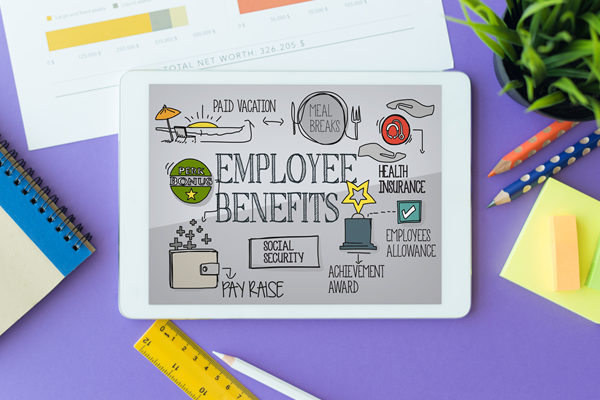By K. Cantwell, Benefits Advisor, Montridge Advisory Group Ltd.
As a benefits advisor for over twenty years, I can’t begin to count how many times an employer has looked to change their benefits offering without first assessing what their employees really require.
Their “research” will be based on what employees mention in passing; trends they read about; what their competitors are doing; or something they themselves are looking to utilize.
One of the biggest shifts to come from the COVID pandemic is the employer-employee relationship, and the need for not only creativity, but also sustainability in an employer’s compensation offering. Benefits make up a significant portion of an employee’s overall compensation, so fine-tuning it takes more than haphazard research.
Benchmarking is Feedback
Most employers don’t have buckets of cash lying around. As well, depending on the industry, there’s potentially a serious labour shortage to consider. Consequently, knowing what’s needed to bring the right people in the door and keep them from walking out it is paramount.
Benchmarking is the perfect place to start. What’s being offered by your industry in your current size band? How about a larger size band if that’s where you look for talent? In your geographical area?
Knowing what’s being offered out there is fantastic groundwork to explore your plan further.
Look at Your Claim Pattern
Your employees may already be telling you what they need in the form of what’s already being claimed under your current plan. Unless your staff count is very small, the data will tell you:
- types of prescription drugs (and what they’re used for) that are being claimed,
- how much of a certain benefit is being submitted, how much was eligible, how much was paid elsewhere (province, spousal plan), and then what your plan paid.
This is valuable data to see what types of issues your employees are already dealing with. Are drugs for depression and anxiety consistently making your top 10? Maybe your plan needs more mental health resources. Is the dollar amount of submitted claims substantially different for paramedicals than paid claims? This may be worth exploring in more detail.
Asking Employees, the Right Way
When asking employees their thoughts on the current benefits plan, keep in mind that there will be an expectation by staff that you’ll do something with the info. Therefore, don’t ask unless you’re ready to act.
Some tips for going through this process:
- Based on benchmarking, claim analysis, and what you think will be the requests, ask your insurer to run some amendment options first. You’ll know how much it costs before taking it to your staff and can leave the too-expensive options off the table for now.
- Conversely, ask some questions with the caveat that they’re being asked for future-looking strategic planning if you’d like that info now.
- Keep the questions simple, straightforward, and keep the survey on the shorter side.
- Some people yell louder than others, listen to everyone’s opinion, and not just the few.
- Don’t simply ask about specific benefits offered in the plan also ask about:
- Employee benefits communication (being unsatisfied may simply be a lack of understanding)
- Financial wellness – it’s severely lacking with employers across Canada, and employees are begging for help. It doesn’t mean you need to splash out for a pension plan if it’s not in the budget, it could simply be lunch seminars on topics such as budgeting, saving for a home, how to prepare for retirement, etc.)
- Non-traditional benefits (pet insurance, virtual care, Health & Lifestyle Spending Accounts, innovative drug programs, etc.)
Many employers are nervous to glean employee feedback about the benefits plan understandably, there’s always some “ask and you shall receive” mentality when this question is raised. However, when careful thought and phrasing is involved, the feedback process can be rewarding for all involved.

